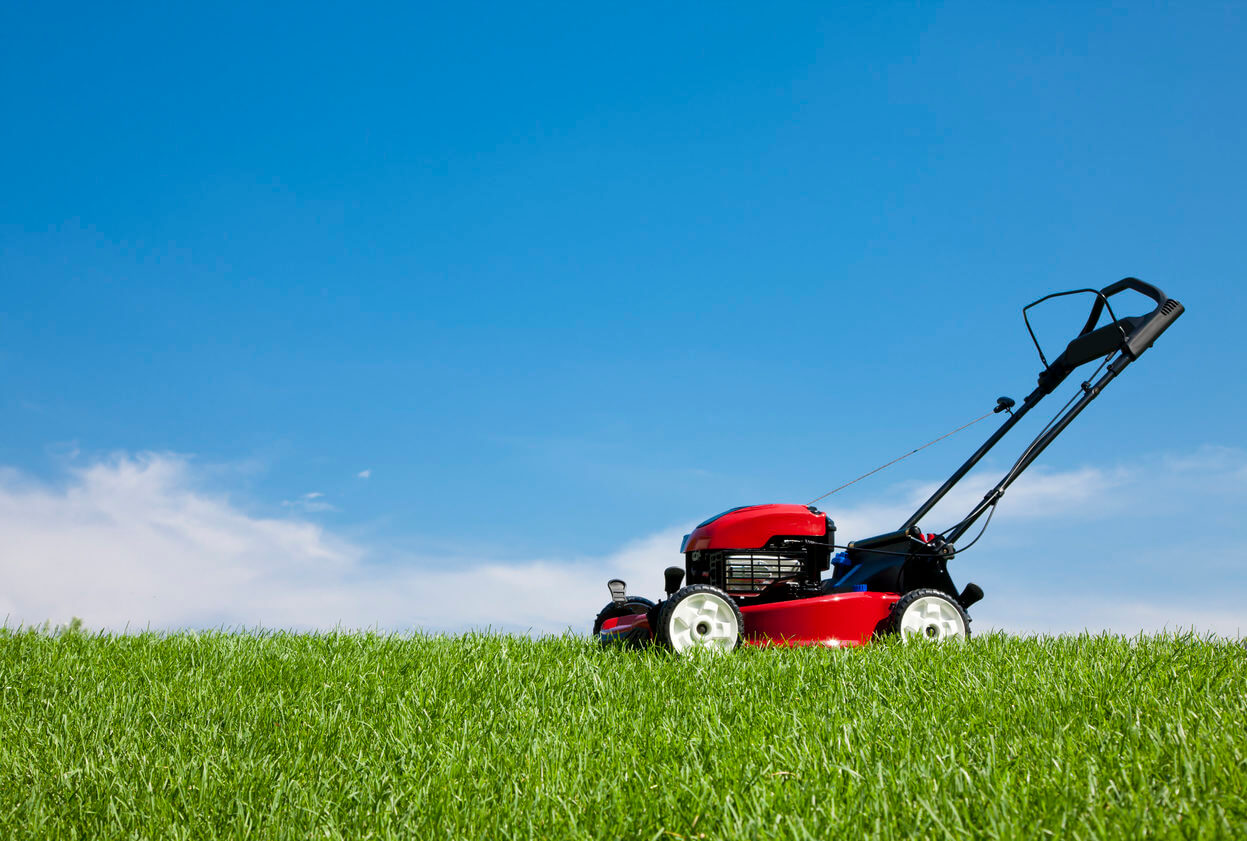How we mow and when we mow is far more important to your lawn’s health than you may realize.
Cool Soil:
Think of your lawn as a little forest. The denser the tree canopy, the more shade is provided below. The same theory goes for your lawn. The higher the mowing height, the more shade below, and the cooler the soil. New England grass likes cool to warm soils – not hot soils. Cooler soil means fewer weeds will germinate and helps mitigate heat and drought stress.
Mowing Height:
The ideal height range for most grasses in New England is between 3-3.5” during the majority of the growing season. In the early spring (the first cut of the season) and late fall (the final cut of the season), drop the cut down to 2”. A proper mowing height provides more leaf blade for the lawn to capture sunlight and manufacture its food. This fact is especially important in the shade where light levels are already diminished. Maintaining a high cut in the shade is critical in allowing your grass to capture all of the diffuse sunlight possible. A high cut also promotes a deeper root system that can capture more water while withstanding drought, heat, and foot traffic to a much higher capacity.
Dull Blades:
Mowing your lawn with a dull blade does a few naughty things to your lawn. First, it shreds the ends of the grass blades, leaving them fully exposed for a host of fungal diseases. Second, the next day your entire lawn will have a lovely brown/tan tint to it instead of the green you strive to maintain. Third and perhaps worst of all, because shredded blades cannot heal over properly, your lawn loses gallons upon gallons of water up and out of your soil. Dull blade mowing is a leading cause for drought stress and browning because the soil dries out as the roots pull up the water and it evaporates out of the shredded leaf blades. Now that is a darn shame and almost criminal.
Time of Day:
Mowing your lawn in the morning or late afternoon is the best time because the grass is generally not under heat, humidity, and or drought stress as is common during the summer. The danger of mowing a lawn when it’s very hot and or dry is twofold: not only does the physical weight of the machine cause damage and leave tire marks, but the water loss from the plant in midday can literally cause a lawn to brown out within hours.
Mulching:
Mulching your clippings is a fabulous way to enrich your soil over time with organic matter, a critical factor in maintaining and improving a healthy soil. Contrary to what many think, clippings do not contribute to thatch buildup. Mulching your clippings over a season is equal to one free fertilizer treatment in terms of nutrients returned to your lawn. It’s free, natural, and easy, so why not mulch your clippings?
Proper mowing is one of the most important factors to having a healthy, lush and green lawn. So adjust your mower height, sharpen those blades, don’t mow in the middle of a hot dry day, and mulch the clippings. If you have a mowing service, make sure they follow these guidelines too. Happy mowing!


